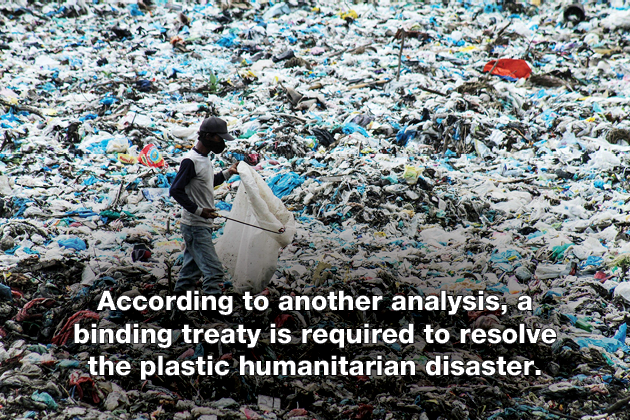A landmark study admonishes that pervasive carbon emitted by the excessive accumulation of plastics poses a serious threat to the planet’s desire to retain a human habitation living environment. It also envisioned for a new United Nations ceasefire vowing nations to better systems help organizations. The Environment Audit Agency, an international non-governmental activist group that monitors and works against environmental crime and corruption, released a report on Tuesday claiming that the hazard postured by plastic pollution is nearly similar to climate change. According to prior studies, virgin plastic emissions into oceans alone are postulated to quadruple by 2040, jeopardizing the propensity of environments around the world to prolong life. It did, however, demonstrate a lack of a compelling legitimately worldwide accord to tackle the problem of rampant plastic pollution.
Forming An alliance with Essence, a notable UNEP dossier, distinguished three introspective obstacles – climate change, biodiversity loss, and pollution – and illustrates how they must be dealt holistically in order to reap disaster resilience. While two of these threats – wildlife habitat and climate change – have specific binding international alliance in place for decades, “no great affinity for plastic yet exists,” according to the EIA survey. “Each crisis has its own band of enthusiasts who say their dilemma is the one most in need of insight, emphasis, and monetary incentives,” the three environmental crises vie for academics and policy attention. However, these do not exist in a vacuum, according to the fact sheet.
These three calamities are entangled, with primary triggers and conflict cabbies, as well as a solitary severity of symptoms – “the excess consumption of fossil resources,” according to the study. Amidst the convergence between aseptic processing, expenditure, and pertinent greenhouse gas emissions, the paper said that “no citation of plastic was made” in the penultimate Edinburgh Climate Accord, which will be ratified in November 2021 at the UN Framework Convention on Climate Change’s Plenary session. The report warned that unless tremendous measures are implemented to decarbonise, toxic waste may reach 700 million tonnes by 2040, and by 2050, the poundage of plastic in every ocean on the earth could “far exceed” the weight of fish.
Our oceans are legitimately becoming a plastic risotto,” the investigation said, stating that noxious plastic had indeed been unearthed not only in the shallowest segments of the seas, but also on the rugged mountain roundtables, human organs, and distant deserted archipelagos. When plastic in the environment corrodes into omni micro and nano plastics, carcinogenic excretions and incurred, which can act as hazard and native wildlife trajectories and contribute to climate change, according to the research project.
Additives around 80% carbon, and their synthesis presupposes the incineration of enormous sums of fossil fuels to address the rising peak load of industries. About 12% of all plastic litter ever made was cremated during the disposal iterations, a method that could secrete additional toxic elements into the environment, such as dioxins formed by burning Polyvinyl Chloride. Some of these poisonous compounds are extremely dangerous for people. Even in minute concentrations, they can dampen immunosuppressive and reproductive systems, counteract cancer, and affect cognitive development.
According to historical averages, or thereabouts 80% of all styrofoam ever conveyed ends up in the inclusive environment or in heaps, where it continues to spew methane, a potent greenhouse gas numerous times more potent than carbon dioxide. The approximate total lifecycle environmental impacts from plastics, including their assembling and desorption, were 1.78 billion tonnes of carbon dioxide equivalent in 2015, as per the interpretation. “To quantify the problem, if the comprehensive plastics life cycle model were a country, it would be the world’s fifth-largest emitter of greenhouse gases,” it said.



